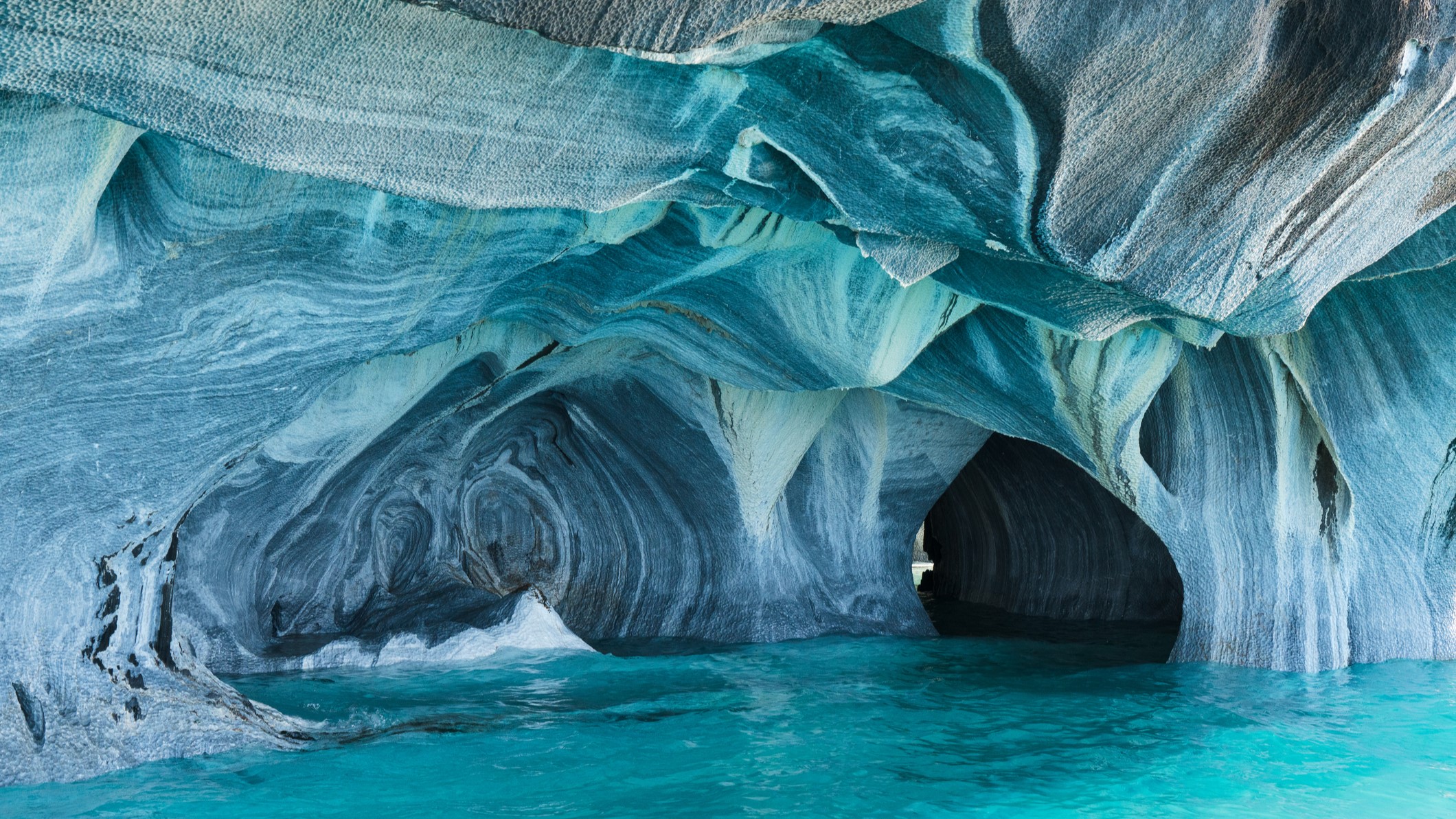Marble Caves: Chile's ethereal turquoise caverns with 'mineral ice cream' on the walls
The Marble Caves sit on the shores of a turquoise glacial lake in southern Chile. Light bounces off the water onto the walls, creating a magical, ever-changing display inside the caverns.

Name: Marble Caves
Location: Aysén Region, southern Chile
Coordinates: -46.65859921219354, -72.62753285805485
Why it's incredible: The marble walls reflect the turquoise color of the water in the cave, tinting them blue.
The Marble Caves are natural rock formations with curved walls covered in swirling mineral patterns. They sit on the shores of General Carrera Lake, a glacial lake in southern Chile. The lake floods the caverns with turquoise waters, which fill the caves with blue light and give them an ethereal appearance.
The Marble Caves are so smooth, they look like they've been hollowed out with an ice cream scoop. But the caves formed due to the slow action of lake water, which dissolved minerals in the rocks until the walls crumbled. Researchers think this occurred over the past 10,000 to 15,000 years, after glaciers retreated from the region and exposed its stone to weathering.
Related: Cave of Crystals: The deadly cavern in Mexico dubbed 'the Sistine Chapel of crystals'
"After the glaciers retreated, the lake was created, and that was when the process of sculpting the [caves] began," Francisco Hervé Allamand, a professor of geology at Andrés Bello National University in Chile and an honorary fellow of the Geological Society of America, told the BBC in 2019.
The stone in the caves was originally limestone, a sedimentary rock made of calcium carbonate. But it transformed into marble, which is a metamorphic rock, under high heat and pressure before the caverns opened, Hervé Allamand said. Limestones are some of the most soluble rocks in the world, he said, meaning they are extremely susceptible to erosion from water.
The original limestone formed closer to the equator than Chile sits today and drifted southward millions of years ago as tectonic plates shifted around Earth, Hervé Allamand said. This grinding journey jumbled up Earth's crust and buried rocks so deep that they became exposed to blistering temperatures of 570 to 750 degrees Fahrenheit (300 to 400 degrees Celsius). Together with the pressure from plate movement, this heat recrystallized the limestone into whitish-gray marble and created ripples of brown and yellow rock where impurities were trapped in the limestone.

"When a rock undergoes metamorphosis, new minerals are formed," Hervé Allamand said, referring to brown and yellow veins within the marble.
Sign up for the Live Science daily newsletter now
Get the world’s most fascinating discoveries delivered straight to your inbox.
Reflections off the water in the Marble Caves give rise to stunning images that shift depending on the light and water levels. The water owes its brilliant azure color to glacial silt, which is also known as "rock flour." This fine stone powder absorbs the shortest wavelengths of light — the purples and indigos — and reflects mainly light-blue and green light back to the surface, giving the water a turquoise tint. (Water absorbs longer wavelengths of light that give rise to red, orange and yellow.)
The turquoise water may look like a tropical sea, but its glacial origin means it's freezing.
The Marble Caves are accessible only by water, and they are best explored with kayaks, which enable visitors to wind in and out of the curved walls, according to the travel website Swoop Patagonia.
Discover more incredible places, where we highlight the fantastic history and science behind some of the most dramatic landscapes on Earth.

Sascha is a U.K.-based staff writer at Live Science. She holds a bachelor’s degree in biology from the University of Southampton in England and a master’s degree in science communication from Imperial College London. Her work has appeared in The Guardian and the health website Zoe. Besides writing, she enjoys playing tennis, bread-making and browsing second-hand shops for hidden gems.










